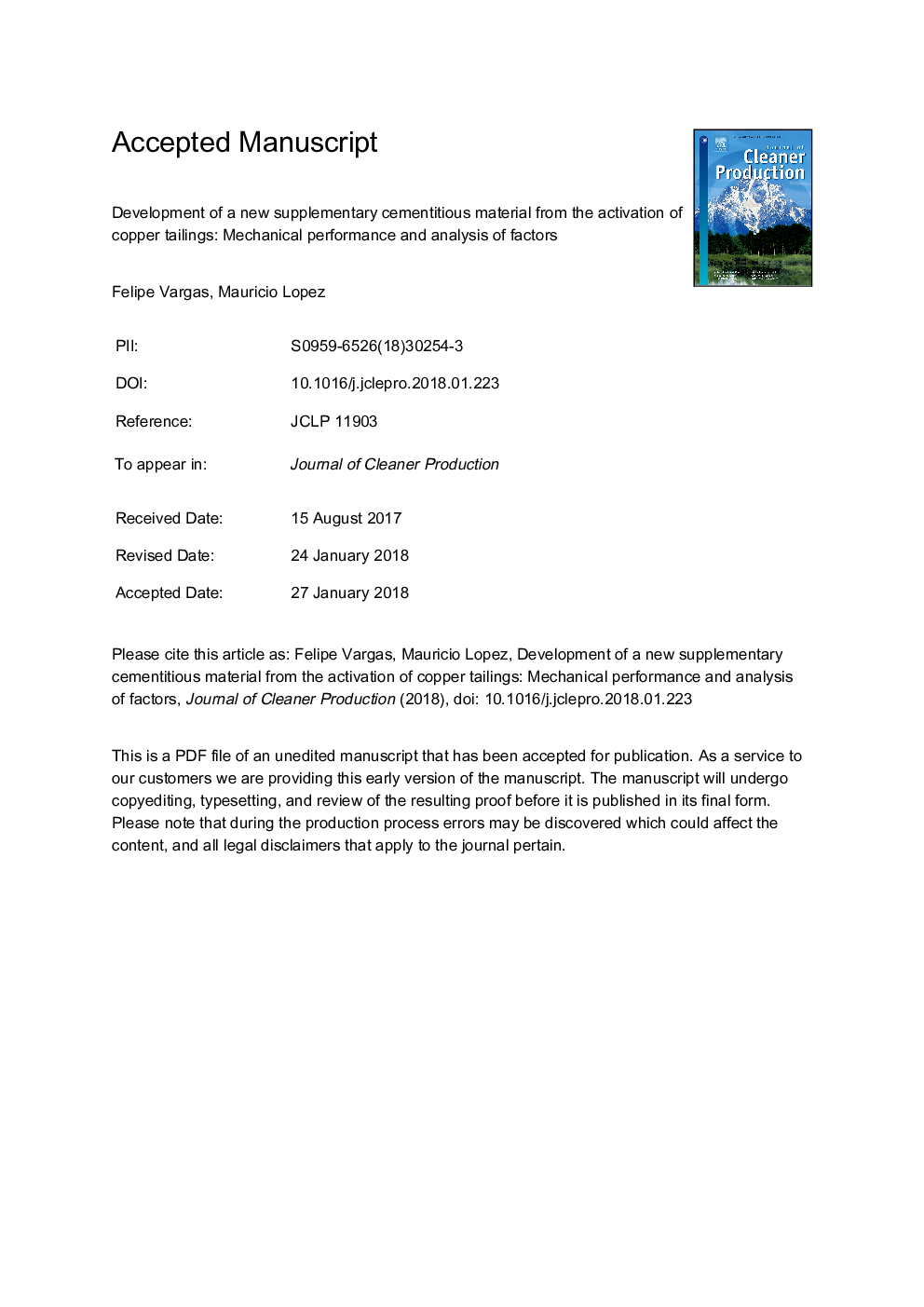| Article ID | Journal | Published Year | Pages | File Type |
|---|---|---|---|---|
| 8097337 | Journal of Cleaner Production | 2018 | 32 Pages |
Abstract
The use of tailings as aggregate and supplementary cementitious materials has been studied previously. Nevertheless, tailings are generally used as collected, without treatment, showing low cementitious capacity allowing low replacement levels of cement (below 15%). This research studies eight copper tailings to determine which tailings are likely to improve their cementitious capacity as supplementary cementitious material by using thermal and mechanical treatments. In the first stage, using TGA and PSD, the capacity of the tailings to undergo chemical transformations through a thermal treatment of up to 1000â¯Â°C and physical transformation through low-energy milling for up to 180â¯min, were explored. Relevant chemical modifications were observed over the range of 500â¯Â°C-900â¯Â°C, with peaks between 600â¯Â°C and 800â¯Â°C. It was also observed that due to the nature of rock processing prior to mineral extraction, the particle size was able to be reduced by 50% after 60â¯min of milling or less. With these results, a central composite design was proposed using thermal treatment temperatures between 600â¯Â°C and 800â¯Â°C (central point at 700â¯Â°C) and milling with a central point at 30â¯min. The results show that the mechanical performance of the mixtures can be improved by up to 40% at 90 days compared to untreated tailings at a 40% replacement level.
Related Topics
Physical Sciences and Engineering
Energy
Renewable Energy, Sustainability and the Environment
Authors
Felipe Vargas, Mauricio Lopez,
